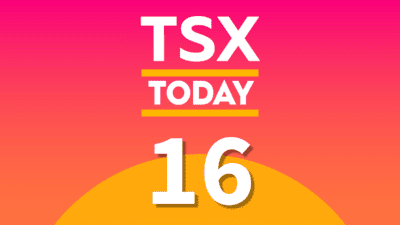I’m a big fan of Peter Lynch’s philosophy of investing in what you know. The former star manager of the Fidelity Magellan fund wrote three books on the subject in the 1990s after retiring from professional investing; they’re all classics.
The one thing he recommended to amateur investors is that they pay attention to what’s right in front of them. If you’re going to Starbucks Corporation every day and spending $5, you might want to have at look under the hood at its financials. You could be sitting on a 10-bagger.
This is why I have such a hard time finding reasons to invest in Metro, Inc. (TSX:MRU).
I shop at Metro frequently because it has a store close to my home (I much prefer Longo’s, which is a private company) but even after its recent renovation, I feel Metro lacks the kind of pizazz I expect from a grocery store. Maybe I’m overthinking it, but I just don’t get the customer appeal.
While I might view it as the ugly duckling when compared to peers such as Loblaw Companies Limited (TSX:L) and Empire Company Limited’s (TSX:EMP.A) Sobeys brand, it’s the leader where it counts—its stock’s performance.
|
Stock |
YTD Return | 3-Year Return | 5-Year Return |
| Metro | 7.5% | 24.7% | 22.9% |
| Loblaw | 2.9% | 14.5% | 13.3% |
| Empire Company | -22.1% | -26.3% |
2.2% |
Source: Morningstar.com
Metro is lapping the competition and has been for some time. I might not get it, but others clearly do.
In its latest quarterly report ended July 2, 2016, its net earnings increased 8% to $176.5 million on $4 billion in revenue and 3.9% same-store sales growth. As it stated in its Q3 2016 report to shareholders, it should be pleased with its latest results. They’re very respectable.
So, in the minds of investors, what does Metro have (excluding consistent profits) that the others don’t? Here are three possibilities.
Alimentation Couche-Tard Inc. (TSX:ATD.B)
Come rain or shine, Metro gets a share of the quarterly earnings from North America’s largest convenience store operator. As the Circle K operator has grown, so too have Metro’s payments. In Q3 2016, Metro got $15.5 million, $6.8 million higher than a year earlier. For the first nine months of the year, it got $67.3 million, $24.4 million more than a year ago—and that’s from a smaller piece of the pie.
In 2013 Metro sold 10 million Couche-Tard Class B shares for $479 million to three Canadian banks. It still holds a 17% voting interest and a 5.7% economic interest, which is worth $2.1 billion at today’s prices.
While its Q3 2016 share of Couche-Tard earnings only represents 8.8% overall, it’s the compounding effect that makes it so hard for Metro to sell off the rest. Nor should it.
Capital allocation
Over the past five years Metro has repurchased $1.7 billion of its stock while also paying out $465 million in dividends to shareholders. That’s about 86% of its net income. As a result of its stock buybacks, its share count dropped by 27% to 235 million over the same period; it’s a big reason why earnings per share grew 11% annually over the past five years.
Earnings and dividend growth drive share prices higher. Metro’s got both.
Limited geographic footprint
Fool.ca contributor Nelson Smith thinks Jean Coutu Group PJC Inc. would be the perfect acquisition for Metro because they both operate in Ontario and Quebec, and that’s about it. He’s absolutely right. The two companies, while large, are definitely more regional in nature. Not to mention you can’t help thinking about the Loblaw-Shoppers Drug Mart tie-up.
Metro dodged a bullet when it didn’t go after Safeway’s Canadian stores. That’s Empire’s headache now. Focusing on central Canada is the right thing to do. While I’m not sure buying Jean Coutu is worth the $4 billion Metro would have to pay, it’s the most logical acquisition I can think of.
Metro’s bread and butter are upper and lower Canada. Moving beyond that would break the mould. It’s fine as it is.







